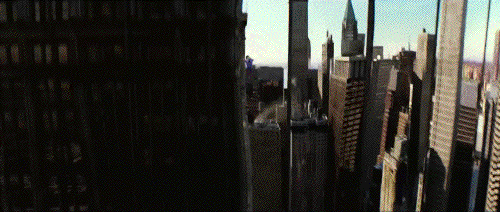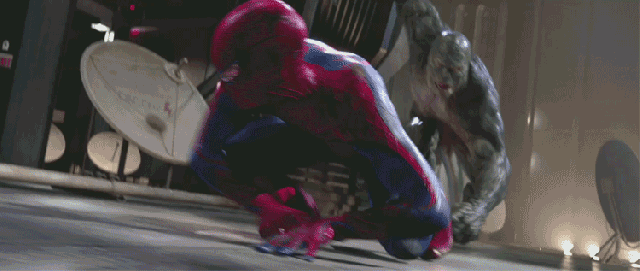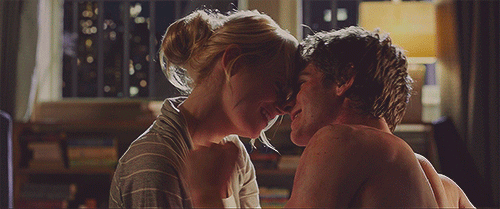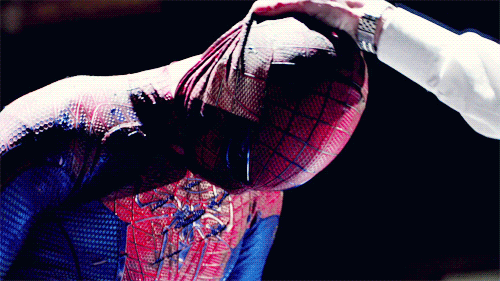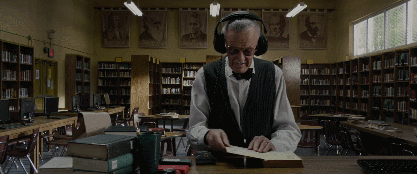“Bilbo once told me his part in this tale would end, and each of us must come and go in the telling”, so said Frodo Baggins, as ‘The Return of the King’ drew to its emotional and poignant close back in 2003, both Hobbit heroes setting out together on one final journey. It’s a quaint philosophy, it’s a thoroughly Hobbit philosophy, yet in its plainspoken humility lies the essence to Middle-Earth’s greatest magic, the true power of the universe that was Tolkien’s imagination, and the ultimate reason for why readers and filmgoers alike continue to return to that world; because it’s a great story, and great stories matter. When it was first announced that we would be returning to Middle-Earth in a brand new adaptation of ‘The Hobbit’, no amount of rumours of development hell, nor even a change of director (Guillermo Del Toro originally attached to the job, with Jackson producing) could truly upset our anticipation. When two planned films became three, eyebrows were raised and scepticism simmered, but our enthusiasm was by no means extinguished. ‘The Lord of the Rings’ was a great story, and as another piece of distinctly Hobbit philosophy reminds us, “those are the stories that stay with you, that meant something”. What more proof of this do you need when ultimately it was our memories of that great story that carried us back to its shores, maybe not in the spirit of seeking further and greater glories but as a fond encore for glories past. Eleven years after Frodo’s words, now we ourselves have come to the end of Bilbo’s tale. The story of the Halfling that truly started it all concludes in this December’s ‘The Hobbit: The Battle of the Five Armies’.
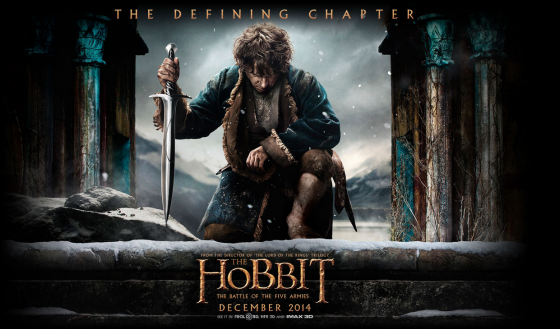
From the outset, these films have never been designed along the same lines as their predecessors. Though ‘The Lord of the Rings’ had a clear overarching storyline spread across the whole trilogy, each instalment balanced that with a relatively self-contained focus, from the forming and fracturing of the eponymous ‘Fellowship of the Ring’, to the battle for Rohan in ‘The Two Towers’ and the War of the Ring in ‘The Return of the King’. With ‘The Hobbit’, being adapted from a single book, the series structure was always going to be more disjointed, and less ‘episodic’. Chastising ‘BOTFA’ for not standing on its own two feet, and relying too heavily on the audience having seen its predecessors (which it does) is misplaced criticism that has nonetheless hounded this trilogy, misplaced precisely on the grounds that none of these films were ever made to be received as individually autonomous productions.
Last year’s ‘The Desolation of Smaug’ closed on a dramatic (some would call it ‘excruciating’, others ‘frustrating’ or even ‘disappointing’) cliff-hanger, and BOTFA unhesitatingly throws us right back into the crisis and carnage we’ve been waiting for. The red and raging dragon delivers spectacularly on his promise of fire and death to the people of Laketown, giving even the iconic entanglement with the Balrog in ‘FOTR’ a run for its money. It’s the richly deserved payoff we’ve been waiting for, but the real triumph here extends beyond giving an all-out-action crowd-pleaser of an opener; it actually cements a degree of justification for there being a third part to this story that needs telling at all. Much like the Dark Lord to come (himself teased with almost giddying fan-service), Smaug’s significance to the story of ‘The Hobbit’ stretches far beyond his physical presence and actual screen time, a pervasive shadow hanging over the Quest for Erebor which, unlike Sauron himself, does not dispel with his death. To have subtitled this final chapter instead as ‘The Desolation of Smaug’ would have been perhaps equally appropriate, so greatly does the dragon’s fury impact all of our characters and set the stage for the final eponymous battle. To have shifted his simmering scourge to the climax of ‘DOS’ would have almost entirely robbed the third instalment of any ‘raison detre’, when there remains a decent story left to tell if we bother to look hard enough. Dividing the story as he did, Peter Jackson gave us a reason to look, and a reminder that ‘all that is gold does not glitter’. That, at least, should count for something in validating a three-part ‘Hobbit’ adaptation.
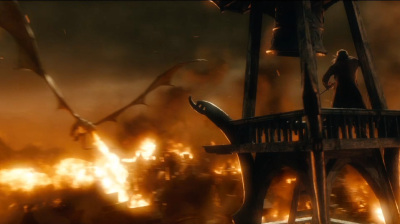
It’s all the more obvious and disappointing, alas, that as the aftermath settles down and war plans build up, that the film goes into padding overdrive. Undercurrents of urgency that should flow without impediment as we witness the plight of Men are clumsily interwoven with awkward attempts at comic relief (courtesy of Alfrid, the conniving former servant to The Master of Laketown) that only test the viewer’s patience, detract from universally more interesting narrative threads, and ultimately contribute nothing of any importance or even relevance to the film at all. Actor Ryan Gage clearly puts his all into this Grima Wormtongue knockoff, but the result is akin to Seth MacFarlane writing for ‘Blackadder’. ‘The Lord of the Rings’ was never without its lighter moments, and previous ‘Hobbit’ instalments may have accommodated more easily accessible and family-friendly humour, but here the comedy astonishingly adds absolutely nothing to anything or anyone, each attempt more fatiguing than the last, and smelling increasingly of material that belongs to the extended edition, or the cutting room floor, rather than a theatrical release. Painfully overdrawn moments also dog the film’s pacing throughout, to such an extent that you can almost see Jackson standing off to the side with a stopwatch counting how many extra seconds can be milked for added effect, from intermittent focus on Thorin’s tumultuous state of mind (a subplot that does however draw to a beautifully realized conclusion, and is not without its unsettling moments) to just how many times orc leaders Azog and Bolg meet their supposed ‘final end’. The various vendettas and personal agendas that litter the climactic battle are all the more jarring when all that seems to keep them going is the sheer stupidity of characters in question. Pacing-wise, what began as a slow yet strangely seductive saunter back into the richness of Middle-Earth in ‘An Unexpected Journey’, and developed into a somewhat uneven momentum in ‘The Desolation of Smaug’, now reaches a state that is somehow both wearied and frenzied. Bilbo himself will go on to admit to Gandalf on his ‘eleventy-first’ birthday that “I feel thin, sort of stretched, like butter scraped over too much bread”. Considering the padding we ourselves have endured at his side, of which ‘BOTFA’ is by a good margin the guiltiest, it’s no wonder.
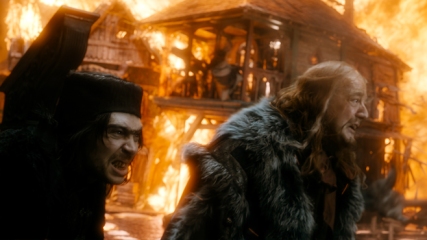
Questions arise further as to the reasoning for certain choices from a production standpoint; Were the effects for the Ringwraiths really finished? Whatever happened to the Company of Dwarves’ original theme music from ‘AUJ’, music up there with the best compositions of LOTR? Why on earth was Billy Connolly’s face CGI’d in the part of Dain the Dwarf Lord? Alfrid’s sheer existence. Valid questions all, but without actual insight into the production process we can but hope that the bonus features on the film’s home media release may shed some light, perhaps even provide adequate justification. What we can judge for ourselves, however, remains the most important part of these films just as it was for LOTR; our characters, and the performances that bring them to life.
From the first, Jackson’s Middle-Earth alumni have slipped back into their familiar roles with such evident ease and comfort that each only further cements themselves as the definitive incarnation, and one and all rise to the occasion of their encore here. Ian Mackellan IS Gandalf the Wizard, Cate Blanchett IS Lady Galadriel, Hugo Weaving IS Elrond and even Orlando Bloom (back in the role that started it all for him) does himself proud. Even had Jackson decided to dwell less on bridging his trilogies together, simply watching these familiar faces and the life they breathe into their characters would in itself supplement these instalments with a sense of a greater whole.
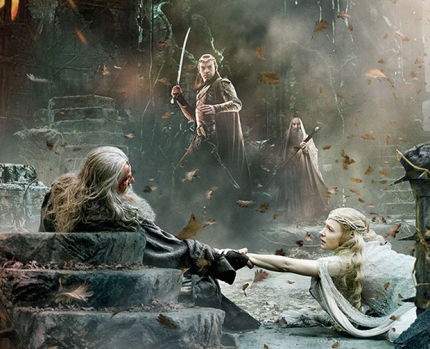
Nonetheless, it is to the fresher cast members of these adaptations that this film truly belong. The Company of Dwarves, ironically enough, remains surprisingly overlooked in terms of individual character focus, somewhat understandable considering the sheer size of the film’s general cast yet consequently undermined by Jackson’s own masterful onscreen handling of the Fellowship of the Ring’s eclectic nine to come. Bombur remains mute as ever, Oin and Gloin are practically omitted altogether, along with Dori and Nori, leaving the story to kinsmen who have actually proved themselves capable of something over the course of these films, be it Dwalin’s abrasive action-readiness, Balin’s proclivity for exposition or the line of Durin’s skill in battle. Evangeline Lilly’s portrayal of Tauriel was one of the most acclaimed talking points last time round, and she by no means drops the ball despite being disappointedly underwritten and underused. Conversely, Lee Pace revels in his part as the borderline-unhinged Elven King Thranduil (psychosis seemingly a pattern this year for him considering his villanous volatility in ‘Guardians of the Galaxy’), the perfect figurehead for exposing a distinctly icier dimension to a race we thought ourselves long-since familiarized with. Luke Evans may not have been the hero he wanted of himself in ‘Dracula Untold’, but channelling Bard the Bowman, Tolkien’s proto-Aragorn, more than makes up for it.
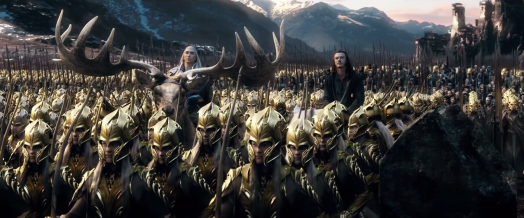
Above all, though, it is to Richard Armitage’s troubled Thorin Oakenshield, and Martin Freeman’s dedication to Bilbo Baggins, that this film’s greatest glories are owed. Armitage has played the King Under The Mountain-in waiting from the outset as a ticking time bomb of obsession and spitefulness, and as he seats himself at last upon his rightful throne, finally can he unleash Thorin’s accursed madness as ‘dragon-sickness’ seizes his mind. Smaug’s posthumous gloat. Armitage is striking in his portrayal of an otherwise mighty dwarf leader’s mental frailty, encompassing the rage of such greed with the helplessness of a conflicted soul and a caged conscience, the only shortfalls to his performance less to do with his acting ability and more to do with additional questionable decisions on Jackson’s part. It’s no small feat that in one instance of his mental deterioration, when Thorin openly threatens the life of his own kin, we can’t help but shudder not only at the fact that we believe his threat, but that we pity him in his mania nonetheless. Hero, villain, whatsoever Thorin’s capacity in the story may be at any time, Armitage embeds his portrayal into the legacy of these Middle-Earth movies, and deservedly so.
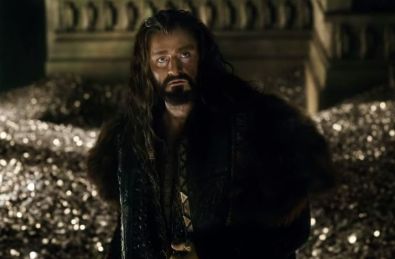
And yet, many a great moment for Armitage would be lacking so much were it not for Freeman’s Bilbo, a Hobbit whose heroism rivals even that of Samwise the Brave. It’s hard to discuss Freeman without getting lost in the general raucous acclaim for his talent, but at the risk of simply echoing others it must be stressed just how quintessential he has become in the role. Like Armitage, he has played this from the outset according to his shred perception and insight into what truly defines the character, in his case the most admirable qualities that simply being one of the Shire folk instils in him. His measured haughtiness when confronted with dubious behaviour, the appetite for taking risks and seeking adventure that increases however his instincts may protest, and his fierce loyalty to his word, and his friends. Freeman embodies each and every one of these attributes with every inch of his body, from the hair from his head to his bare over-sized Hobbit feet, and on top of everything else even evoking just the faintest sense of Ian Holm himself. Whenever we watch Bilbo pass onto Frodo his Mithril vest and trusty ‘Sting’ from now on, we won’t just see an old Hobbit handing over a few personal trinkets. We will see the Hobbit who slew giant spiders with that sword, whose friendship with a dwarf king was so deeply forged that he received a gift of garments worth far beyond anything he ever assumed, such is his distinctly Hobbit humility. This entire undertaking, of transporting Tolkien’s original invitation to Middle-Earth onto the big screen, rested so staggeringly much on the title role. Without just the right performer, without just the right performance, these films would have buckled. Freeman is perfect beyond dispute, and no matter the criticism that is justifiably levied against these films, his performance single-handedly sustains a tremendous degree of credibility for them.
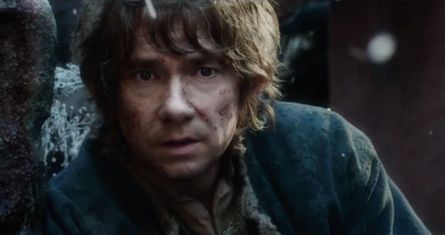
It’s taken a good while for my thoughts and feelings about this film to thoroughly process, far more so than my reactions to its two predecessors. I have never for a moment expected these films to match the splendour of Jackson’s definitive originals, for me the single greatest story ever told onscreen by the single greatest example of storytelling onscreen. I have understood, accepted and incorporated into my view on these films that they are of a different design, intended for collective appreciation rather than individually independent satisfaction. When I first saw this film with a group of close friends during opening weekend, one of whom has shared my appreciation for the original cinematic works like no other, I found myself disappointed despite all my measured expectations. The flaws of its predecessors seemed to have exacerbated, and so many clear decisions of the production process evident in, and influencing the finished work beggared personal belief. Add to this the general consensus of disappointment (or even disdain) amongst my group, and my immediate reaction was to reason that, whilst enjoyable to a degree, our final journey to Middle-Earth had been ultimately a lacklustre, ill-conceived and clumsily executed one. It’s now a week since I first saw it, during which I have reflected long and hard about not only how I saw the film in and of itself, but as a piece of the far greater picture. Tonight I went again with family, and I astonished myself, because this time I enjoyed it tremendously. A factor in this was that several inconsistencies and logic failures I had perceived the first time round, and which I was by no means alone in noticing, suddenly rectified themselves before my very eyes based on things I had previously overlooked or underestimated. The film’s overt flaws remained unquestionable, yet somehow I felt able to forgive them somewhat. Scenes I considered pointless or idiotic, though failing to change my mind, at least didn’t feel so protracted this time. There is much to this film that will likely aggravate the viewer, initially, and yet if looked closer into and with an open mind there may be found much that can be considered worthwhile.
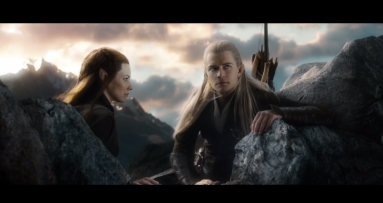
As a film in its own right, ‘The Hobbit: The Battle of the Five Armies’ is the weakest of its trilogy. Despite a comparatively succinct running time, the shortest at 144 minutes, it struggles to balance its focus across the plethora of characters we have come to know over the past two years, with plot points also becoming lost in the mix here and there. Creative and production decisions that perplex considerably more often than they please only distract unnecessarily from where our attention prefers to be held, and fan service can only either delight those in the know or further disorientate those who aren’t.
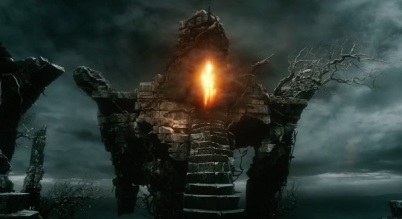
As closure for ‘The Hobbit’ trilogy, it’s an enjoyable encore to what was from the outset a flawed production. The forced ‘love triangle’ seeded in ‘The Desolation of Smaug’ is still forced, arguably even more so. Misdirected screen time resulting in a number of underwritten and underutilized characters continues to rob its victims of a chance at a final shine, but at the very least gives us satisfying focus on those we’ve come to care about both by default and through their consistently strong performances. In addition, Smaug is strongly deserving of a top-end position in the ranks of ‘greatest onscreen VFX creation’, Benedict Cumberbatch determinedly ensuring his relatively limited screen time is compensated by the deep impression he leaves us with. A sufficient, somewhat satisfying resolution to a film series that, at least in comparison to what came before it, was never going to transcend subpar status anyway.
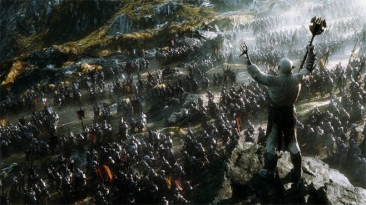
However, there remains one gem in the bounty of storytelling that these films offer, a gem of such significance that when looked at in the right way, it’s a veritable Arkenstone of comprehension. To understand it, we have to firmly establish one fundamental fact about these films; they have been designed from the very beginning not simply as ‘Lord of the Rings prequels’, but as the untold prologue to many core elements of ‘The Lord of the Rings’ that made those features all the more impressive an achievement in storytelling. In some ways or others, each successive chapter of ‘The Hobbit’ trilogy has successfully tapped into the sense of a grander, more elaborate and escalating story at work, from Bilbo’s game of riddles with Gollum to Sauron’s reveal to Gandalf and the slow but steady increase in significance to the story of certain ‘rings of power’.
In consequence, when we have our complete set of ‘The Hobbit’ on home media, we shall be able to watch the story of Middle-Earth and the ‘Saga of the Rings’ quite literally from start to finish, practically as if that was how they were all made in the first place. ‘The Battle of the Five Armies’ is certainly a climax, but ‘The Return of the King’ retains its place as the ultimate be all and end all of Middle-Earth’s fate. Bilbo’s adventure stands in its own right as an enjoyable tale, but it does not eclipse that of his nephew to come, nor do I feel it was ever trying to. Flawed it may be in places, quite substantially so, but ultimately through proactively establishing its cohesiveness with the original trilogy we all praise, Jackson has successfully expanded the mythology of Middle-Earth in mainstream popular culture. When we go to Moria with the Fellowship of the Ring, we will enter Balin’s tomb with a heavier heart. When Saruman betrays Gandalf, we will better understand not only his fall from grace, but the sheer power of Sauron to corrupt, as well as the significance of Legolas’ and Gimli’s friendship after all we’ve seen of elf-dwarf relations. Most of all, when we see Ian Holm’s Bilbo in his old age from now on, we will remember seeing the determined younger Hobbit who toyed with three cave trolls, who stood between an injured Thorin and Azog’s hunting pack, who solved the riddle of the secret entrance to Erebor, and who faced and even outwitted a dragon. The Hobbit films are not great films, but their legacy will be that they managed to enhance our appreciation and enjoyment for one of the greatest cinematic achievements in history. That, says this reviewer, is treasure enough.
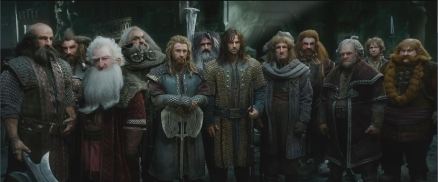
Quality: 3/5
Entertainment: 4/5
Averaged out: 3.5/5
